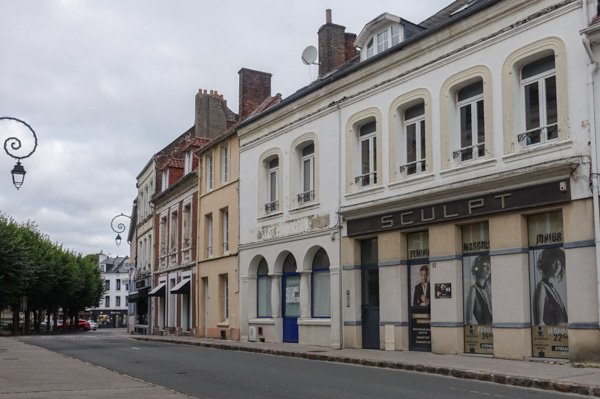 Our friends Jamie and Hervé have sung the praises of Montreuil-sur-Mer since they visited the town several years ago (Hervé is from a small town not far away) and when they suggested we meet them there for a couple days, we thought about it for at least five seconds and signed up. We are super-glad we did: we had a great time with Jamie and Hervé and Montreuil-sur-Mer is probably the most beautiful and interesting small town we’ve ever seen in France – or anywhere for that matter.
Our friends Jamie and Hervé have sung the praises of Montreuil-sur-Mer since they visited the town several years ago (Hervé is from a small town not far away) and when they suggested we meet them there for a couple days, we thought about it for at least five seconds and signed up. We are super-glad we did: we had a great time with Jamie and Hervé and Montreuil-sur-Mer is probably the most beautiful and interesting small town we’ve ever seen in France – or anywhere for that matter.
Now first, how is the town’s name pronounced? Well, us native English speakers will likely never get it right, as euil is one of the most difficult syllables for us to pronounce. The best I can say is “mon-troy” with the “oy” close to that in “oy-veh!” That’s as good as I can describe it.
The name means, of course, “Montreuil by the Sea” which is surprising because the Atlantic is about 10 miles away. But in the 13th century, an inlet of the ocean, large enough for navy ships, reached Montreuil-sur-Mer; it was the only Atlantic seaport controlled by the French monarchy; since then, the inlet has silted up and a person standing at the highest point of Montreuil-sur-Mer can just barely maybe possibly see the ocean.
Montreuil-sur-Mer is a small town, about 2,900 people, a bit south of Calais (you can see it on Google Earth at 50°27′53″N 1°45′47″E). It is a completely walled town. It has a part in history: in 1066 William the Conquerer gathered his army and navy here, sailed to England, won the Battle of Hastings and became the first Norman king of England. During World War I the Allied Headquarters were here from 1916 to 1919, when they were closed after the war’s end in November, 1918.
Montreuil-sur-Mer has another attraction for me: one of my favorite books is Victor Hugo’s Les Miserables, and in that book the main character, Jean Valjean, lived here for six years and became mayor of the town. Fantine, mother of Cosette, also lived and died here. For me then, I looked forward to walking the streets that Jean Valjean walked (really, the streets that Victor Hugo walked, as he placed that part of Les Miserables here after spending several long vacations in the town).
Rather than write a long and boring description of Montreuil-sur-Mer (ignoring that I just wrote a long and boring description above), I’ll give you some pictures…
Walking Around
Pictures from walking around the city:
Hervé plotted our route to dinner, taking us through these two passages; the second one brought us right to our restaurant that evening…
Continuing my long-time theme of doors and windows…
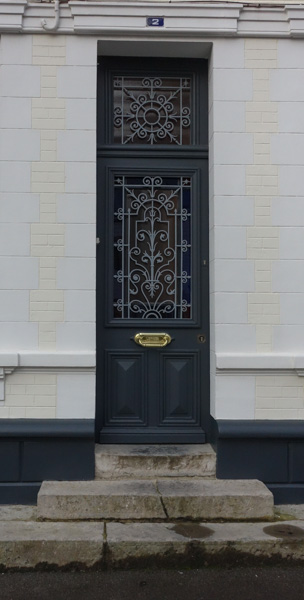
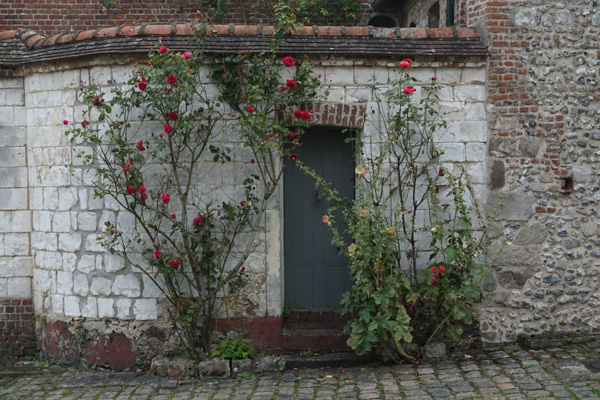
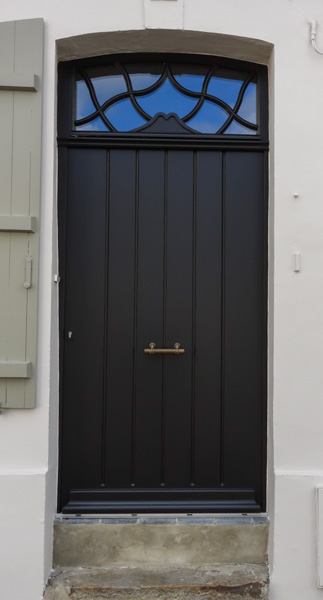
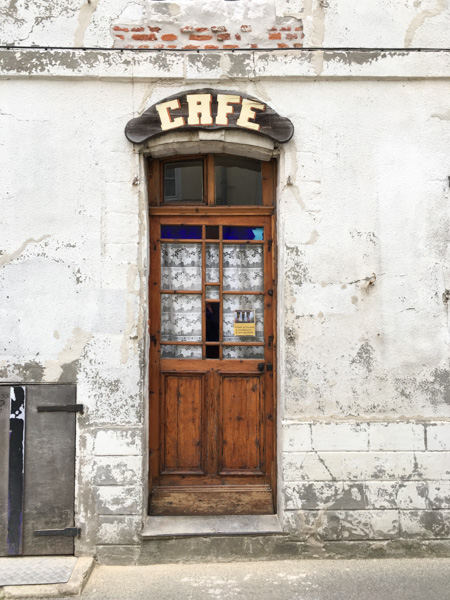
The Walls and Citadelle
Montreuil-our-Mer is a completely walled city. We walked every inch of the walls, which are 80-100 feet high in many places. We also visited the Citadelle, which was the center of the city’s defenses for hundreds of years.
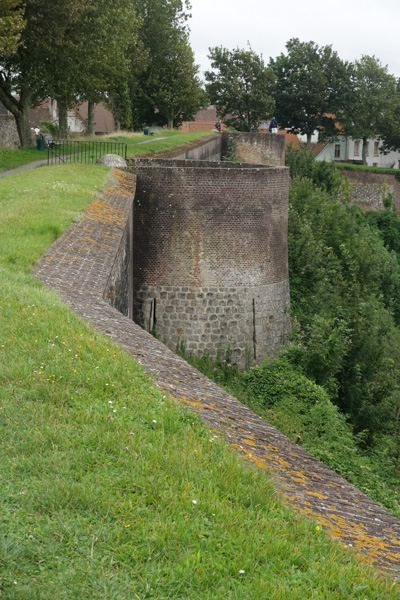
The walls of the city are pretty amazing. I’ve always wondered what the soldiers of an attacking army thought when they saw a city with tall, strongly-defended walls like Monteuil’s and heard their officers say, “Ok, men, climb up those walls and take the town! We’ll be right behind you.”
Food
We ate well here. Hoo-hah, did we eat well here. I’m not a fan of food photos, so only a couple here, and pictures of the restaurants at which we had dinner.
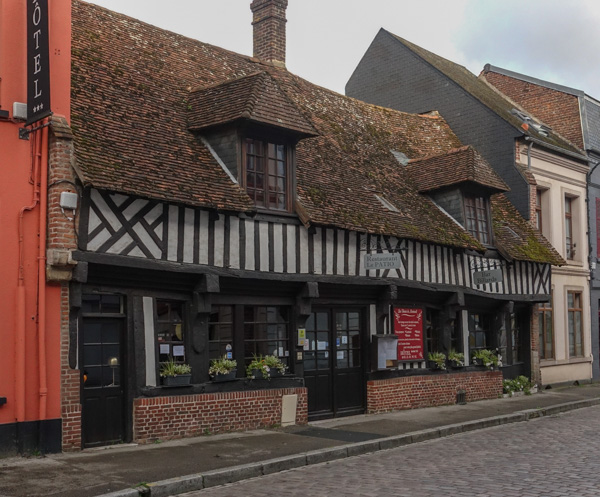
Had dinner here the first night. We agreed that it was among the best dinners we’ve ever had in France. This restaurant is in a former house which was built in 1537!
Main course was maigré, a white fish, for all but me. I had a tangine d’agneau (lamb tangine). Then we had dessert…yes, we did:
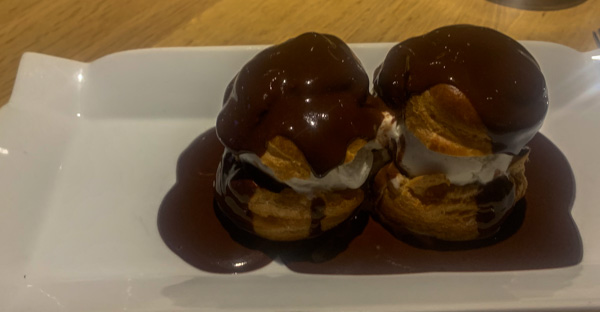
Profiteroles, an old French dessert that many restaurants still serve. But rarely like these, which were fantastic. They were listed on the menu as Les Authentiques Profiteroles. Don’t know exactly what that meant, as we’ve never had faux profiteroles, but, geeze, were they good.
Lunch the next day:
The next night we downscaled a bit to this restaurant. It served what I describe as “hot pots.” We all had the fish one, which included mussels, cod, shrimp, veggies and potatos in a pretty tasty broth. Not so fancy as the night before (and about half the cost), but very good.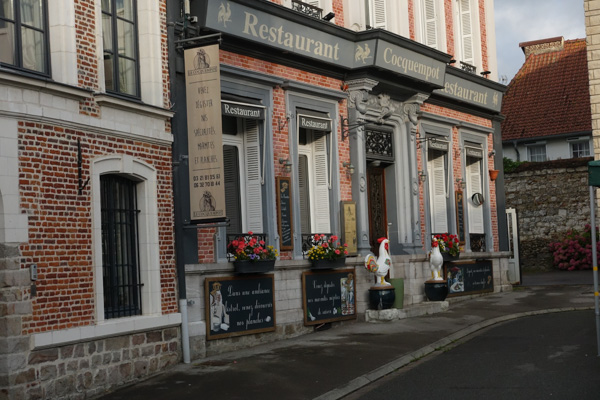
One More Thing: a Monastery
We took a tour of a Carthusian monastery (no longer active) nearby. We really like visiting monasteries and convents and abbeys. Always interesting places, always with histories attached, and always insights into a life long gone.
This monastery had several interesting aspects. At any given time, there were only 24 monks and 24 brothers. The monks ran the place, had religious instruction and duties and lived in reasonably nice quarters; each monk had a small two story cottage with a garden (they could raise anything they wanted in the garden, except food). The brothers were essentially peasants from the area and did not live in such nice quarters; they did the hard work of the monastery.
This monastery served as the printer for all Carthusian monasteries in Europe; this increased its wealth immeasurably, and gave it power, as it decided what books would be printed and sent to other monasteries.
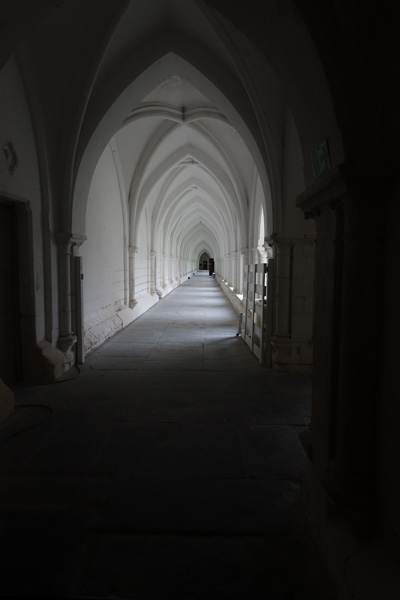
The cloister, unusual in that the walls were enclosed in glass.This was because the weather was pretty bad and to be able to use the cloister, it had to be enclosed. We’ve been to a lot of cloisters, and never seen that.
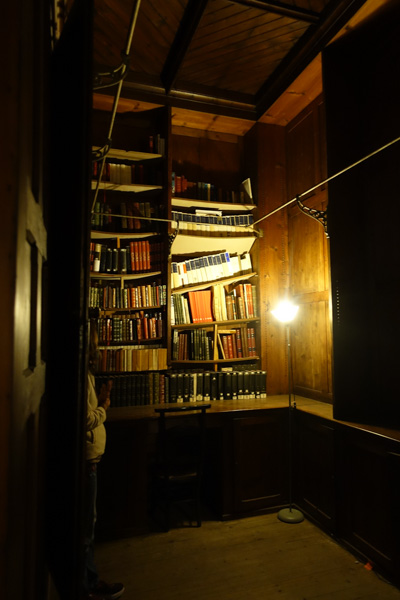
For Laurie’s library friends… This room was off the main library and called the Purgatory Room. Here newly arrived books were kept until the head monk could review them and see if they were acceptable, in terms of dogma, for other Carthusian monasteries to use. Clearly, this gave the monastery huge power.
Montreuil-sur-Mer was a huge hit with us. We walked and walked and climbed stairs and climbed more stairs and still we didn’t see everything. We’ve found over the years that maybe the greatest pleasure in traveling is just walking around places like Montreuil-sur-Mer and absorbing the beauty and culture and history. I suspect we will return to this town.

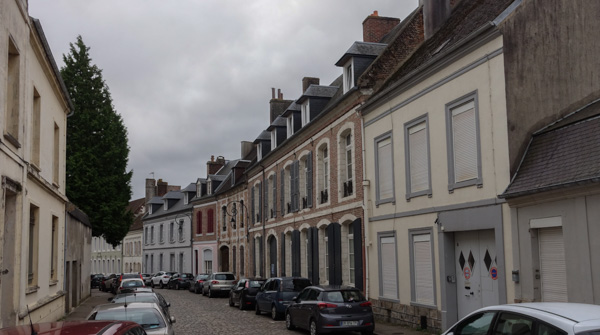
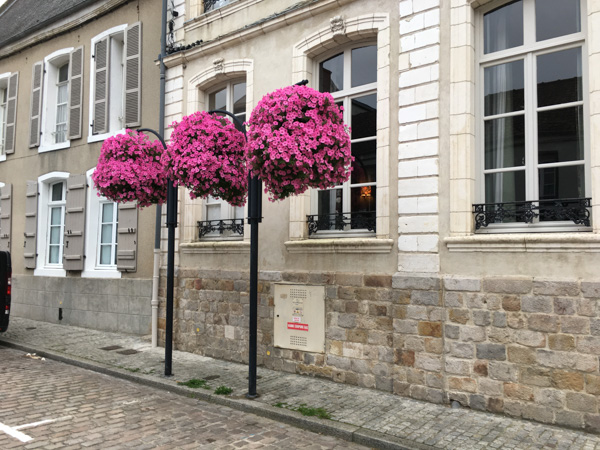
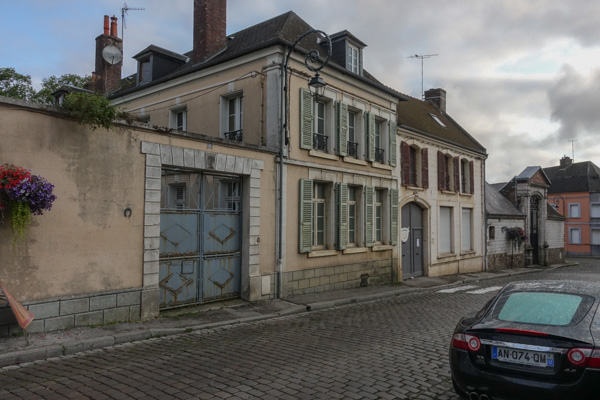
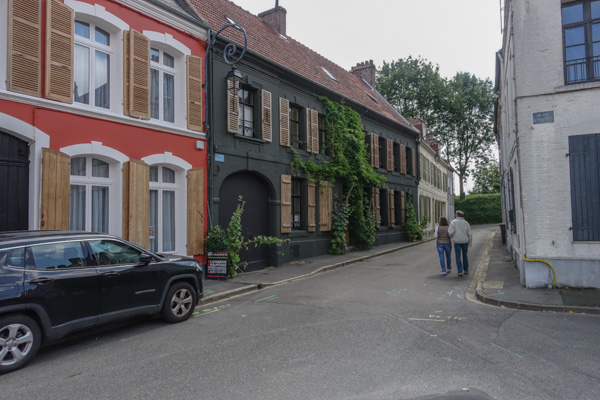
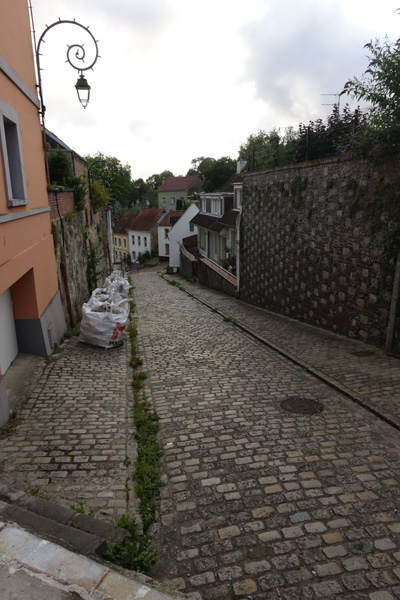
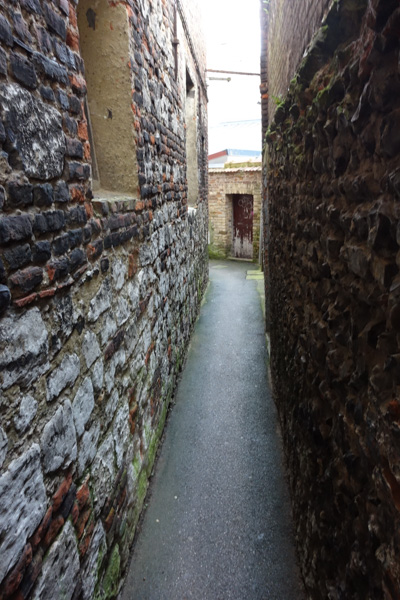
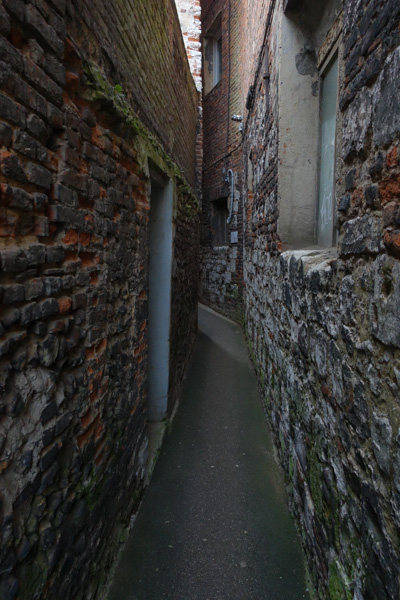
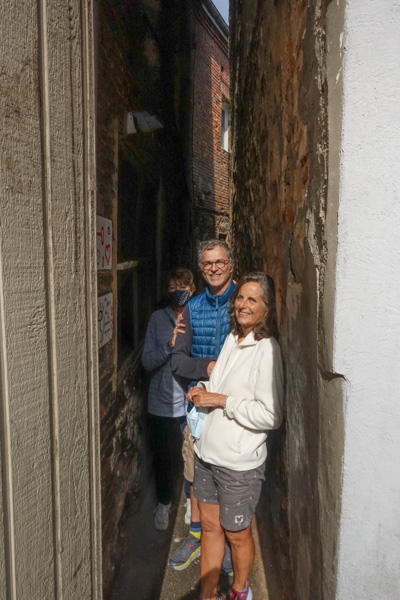
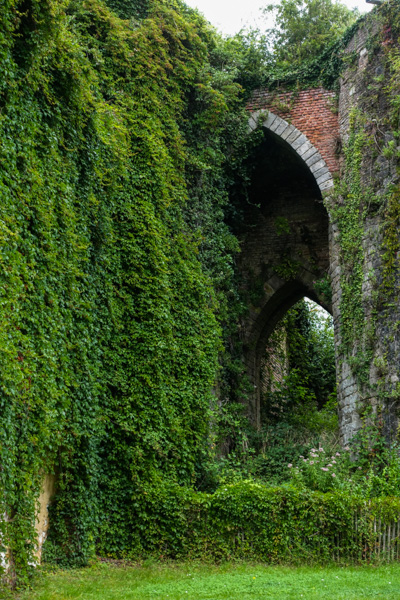
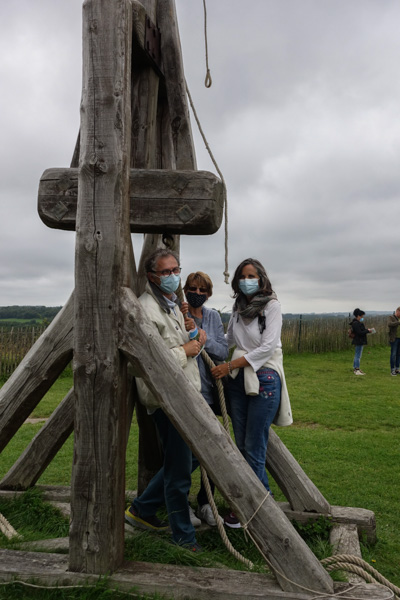
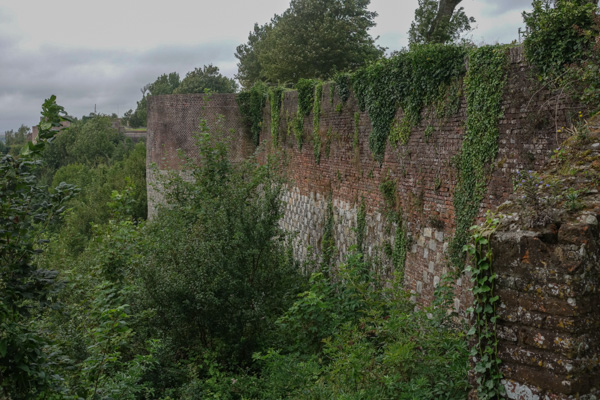
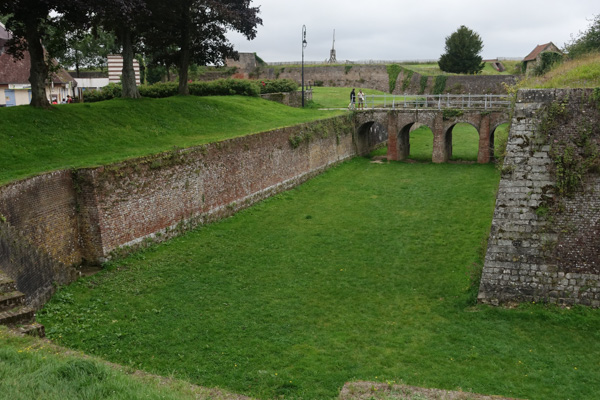
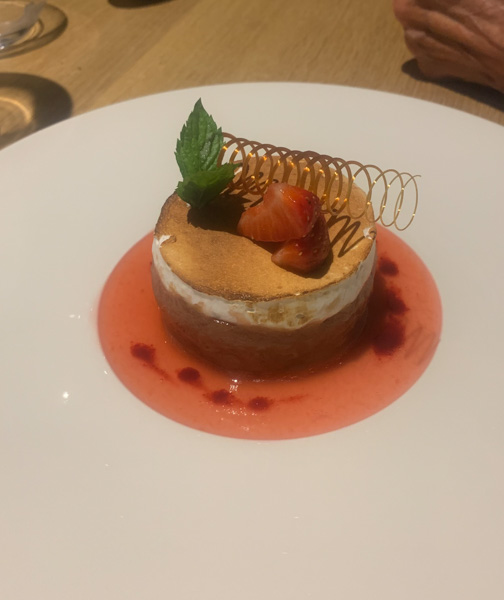

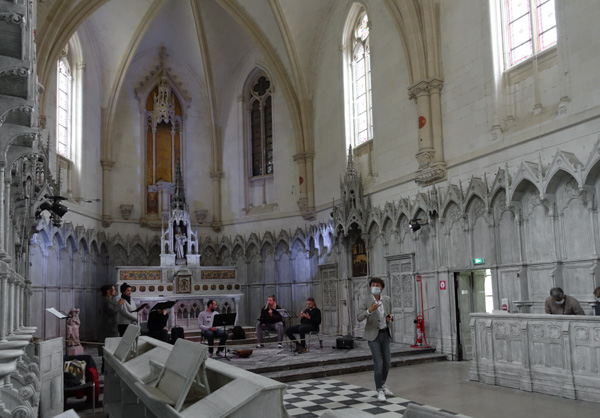


Sounds wonderful! Can’t wait to go! Finally figured out how to get your blog in full format…duh…much better.
It’s on our list now!
I love the walled cities. Such great photos too…
I was just showing Ken the photos. He’s trying to read the paper, but I keep interrupting to show him another one.
The entire post is fascinating!
So glad to be following along on your explorations. I love the door pictures – I like to photograph doors as well! And I’m happy you took the food pics even though it’s not your thing – I may have drooled a little on my laptop.